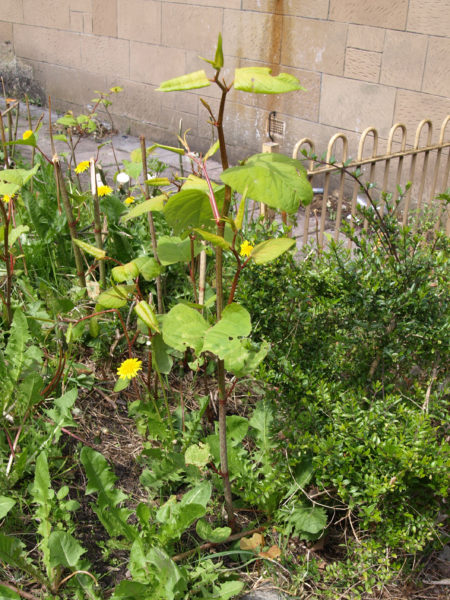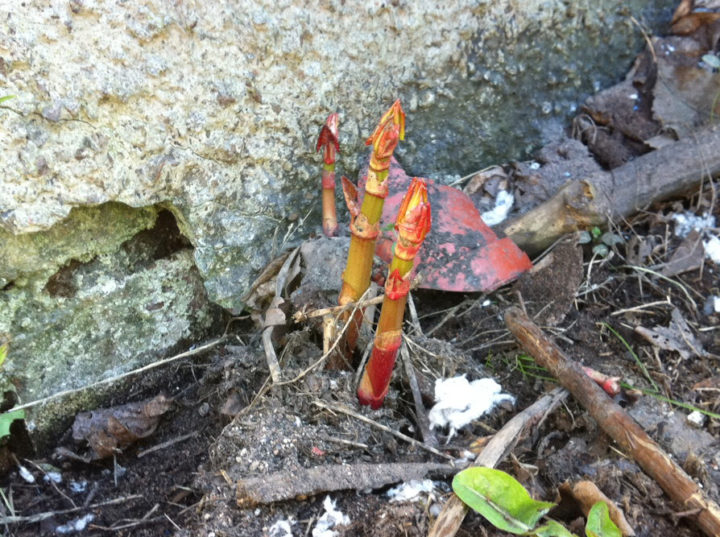Advice for homeowners and landlords on how to identify Japanese Knotweed in Spring. Includes pictures of what Japanese Knotweed looks like as it starts to grow in Spring, the first signs of Japanese Knotweed and how the weather affects Japanese Knotweed in Spring.
Spring begins with a warning for homeowners
In 2018, the snowstorms in spring caused chaos all over the UK but one positive thing caused by the alarming conditions was delaying the emergence of Japanese Knotweed to late April and in some cases, early May.
We may all love warm springtime weather but unseasonably warm weather can come at a price as it can cause Japanese Knotweed to appear up to two months earlier than in colder years. This is a serious cause for concern as the weed grows at a dangerous rate once it emerges, and its presence on private property can cause the value of that property to decrease, often by tens of thousands of pounds.

Luckily invasive weeds experts, like the experienced and qualified surveyors at Wise Knotweed Solutions, can give you all the information you need to identify Japanese Knotweed in Spring while it is weak before it grows to a dangerous level and seriously affects your property’s value.
How to identify Japanese Knotweed in spring?
Japanese Knotweed growth is normally first spotted in March, taking the form of pink and red buds that will shoot up from the ground. The early growth of Japanese Knotweed in spring has been compared to asparagus spears that will grow unrelentlessly into hollow and thick canes. This contains a distinctive pattern of purple speckles, acting similar to bamboo.
As spring progresses, green leaves will begin to unroll from these canes as the plant increases in size. The leaves will appear heart shaped with a pointy end and will contain a zig zag pattern on its stems.

Why is Japanese Knotweed such a problem?
Japanese Knotweed can be quite deceptive as it is quite an attractive looking plant but it has the potential to cause disastrous consequences for the structural integrity of a building.
It can grow at an incredible rate of 1 foot every 3 days and reach 3 metres in height. However, it is not just its leaves and canes that grow. The roots of Japanese Knotweed can stretch up to seven metres in any direction, and it is this alarming growth of the root system which makes it capable of squeezing into the tiniest nooks and crannies in masonry and concrete.
Due to the potential damage Knotweed can cause if left untreated, an increasing amount of banks and building societies are refusing to provide mortgages on properties affected by the plant unless a professional treatment programme is in place – spelling trouble for landlords and homeowners alike.
I think I have Japanese Knotweed… What’s next?
Properties can lose considerable value due to Knotweed but that does mean the plant can not be treated before this occurs.
If you suspect you have Japanese Knotweed anywhere near your property, then it is strongly advisable to have the suspected Knotweed examined by an expert surveyor so an appropriate and affordable treatment programme can be put into place.
Written by Jake Ryan of Wise Knotweed Solutions




